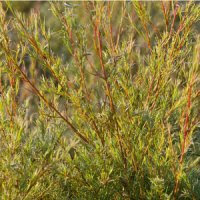Skincare/Fungus
Fungal infections can range from ring worm, (most common on the skin) deep mycoses (usually at
 |
| Typical Ringworm Presentation |
For treatment, out of the basic array of carrier oils, best choice is Calophyllum inophyllum (Tamanu) - Madeleine says is anti-fungal in and of itself. Other bases, borage or evening primrose CO2s, Virgin Coconut or Jojoba. Food grade Aloe Vera Gel can help keep area drier when used as a base.
Best essential oils, either Geranium or Manuka (two first choices.) Depending on the condition you could use German Chamomile for inflammation, Lavender or Peppermint for itching; Helichrysum or Lavender for pain, Sandalwood for itching and soothing, but always the primary oil is one of the two first choice oils. Always a very low dilution!
German Chamomile, Helichrysum, Peppermint or Rose hydrosols may all prove helpful, as may Calendula infused oil.
Suggested using white clay as a dusting powder if area is moist.
Herpes
Herpes Zoster - ShinglesFor shingles, Madeleine recommends Passion flower tincture, or St. John's Wort Tincture, in Food Grade Aloe Vera Gel. (I need to ask if taking the tinctures internally, the way they are usually dosed, would be helpful.) Reminder, Dr. R. J. Buckle and Dr.Kurt Schnaubelt both teach that either Ravensara aromatica or Ravintsara (cinnamonum camphora ch cineole) in a base of Calophyllum Inophyllum (aka Tamanu) is the specific for shingles, in a very strong dilution, even up to 50% initially.
Herpes simplex virus 1 - cold sores
Herpes simplex virus 2 - genital herpes
For both of the above, the preferred base is Calophyllum inophyllum (Tamanu) although Madeleine also recommends Borage, Evening Primrose CO2, or Rose Hip Seed CO2, or Jojoba if Tamanu is not available. Her preferred essential oils from the basic groupings would be Bergamot or Peppermint, but she also suggests Ravensara aromatica and Melissa.
(Note, Jane Buckle recommended the same treatment for any form of Herpes that she recommended for Shingles.)





